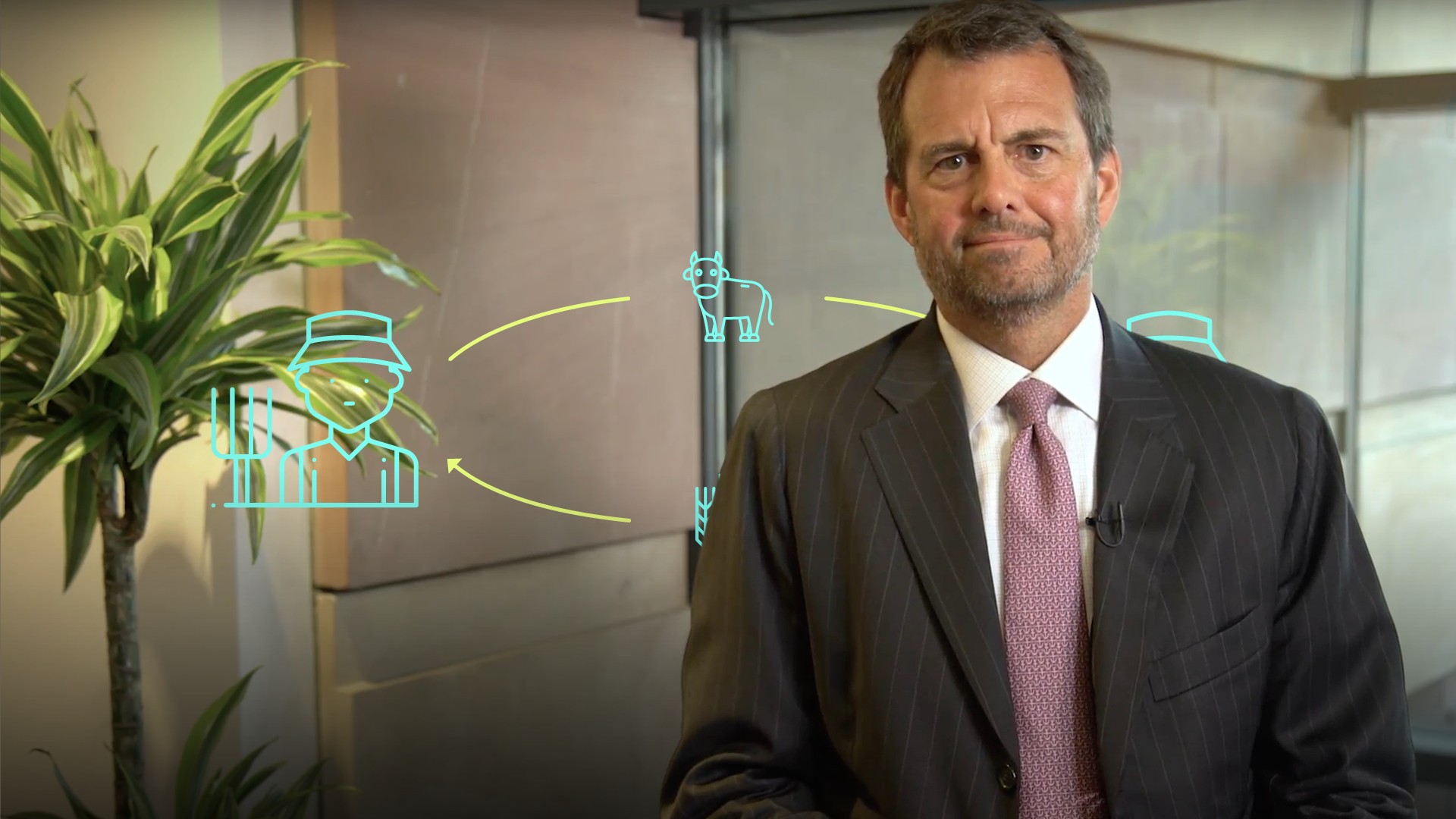
Economic Policy Tools, Bretton Woods and the Gold Standard

Tim Hall
30 years: Debt capital markets
In the first video of this series, Tim dives into the history of money and describes the transition process from bartering into paper money. Similarly, he describes the development of central banks and their roles today.
In the first video of this series, Tim dives into the history of money and describes the transition process from bartering into paper money. Similarly, he describes the development of central banks and their roles today.
Subscribe to watch
Access this and all of the content on our platform by signing up for a 7-day free trial.

Economic Policy Tools, Bretton Woods and the Gold Standard
12 mins 27 secs
Key learning objectives:
Understand the different policy tools
Describe the history of money
Learn about the evolution of the central bank
Overview:
This video provides an insight into the history of money, beginning with bartering, before transitioning to paper money as we know it today, and the evolving role of central banks now acting as “lenders of last resort”.
Subscribe to watch
Access this and all of the content on our platform by signing up for a 7-day free trial.
What are some policy tools that different countries use to manage their economy?
- Monetary policy
- Refers to a central bank’s ability to alter the money supply, making more money available during weak economic times to boost economic activity and making money less available during strong economic times to curb overly-robust growth that might prove inflationary.
- Fiscal policy
- Refers to the use by governments of taxes and expenditures to influence the economy. For example, higher government expenditures and/or lower taxes stimulate an economy.
- Regulatory policy
- Reforms that improve the overall governance and transparency of companies, including financial institutions, making it easier to do business. For example, having a framework in place for dealing with non-performing loans of financial institutions during times of crisis.
What was the transition from bartering to paper money?
- Before money as we know it today existed in the form of coins or paper, people transacted using barter, which is the exchange of goods or services for other goods or services.
- Gradually over time, things like animal skins and salt evolved into more broadly accepted mediums of exchange, effectively serving as de facto currencies.
- Around 100 BC, the Chinese began to create bronze coins containing depictions of goods on them, which served as acknowledging the particular good as a medium of exchange without having to actually have the good in hand.
- The first use of minted coins was believed to have been in the early sixth century B.C. in the state of Lydia.
- Paper money evolved in the 7th or 8th century in China under the Tang Dynasty.
- However, it was not until the 17th century that paper money began to appear in Europe, with Sweden leading the way in 1661. It grew in popularity in Europe, however, its value fluctuated because there was no basis for valuing it in most cases, and counterfeit money was rampant.
When was the gold-linked currency introduced?
Eventually, governments began to support their currencies by guaranteeing to exchange them, including coins and paper notes, for a fixed ratio of silver, gold or a combination. This idea of a currency backed solely by gold became commonplace during the late 19th century and early 20th century. As currencies became more accepted as a medium of exchange, global trade flourished.Why was the gold standard abandoned?
In spite of its success, highly volatile global economic conditions during and after WWI caused countries to abandon the gold standard, since the fixed link to gold prohibited governments (via their central banks) from engaging in expansionary monetary policies to assist in economic recovery. In other words, the amount of currency in circulation was tied to gold reserves, and since they were fixed, so was the money supply. The UK abandoned the gold standard in 1931, the USA in 1933, and France in 1936.What was the Bretton Woods Agreement?
In 1944, 44 countries agreed to a new agreement which pegged the exchange rate of the various currencies to the US Dollar, which in turn was pegged to the price of gold at £35/ounce. This meeting also resulted in the formation of the International Monetary Fund - or IMF - and the World Bank. However, this agreement came to unravel in 1971 when then-President Nixon decided to temporarily end the convertibility of dollars for gold. As a result, the agreement was abandoned by the US in 1973. From this point onwards, nearly all currencies became fiat currencies - backed only by the full faith of the issuing government.What are central banks?
Generally, central banks are entities in each country that are responsible for managing the country’s money supply, and hence, engaging in monetary policy.When were central banks first introduced?
- The first central bank was established in Sweden in 1668, known as the Sveriges Riksbank. Its purpose was to lend the government money and to act as a clearing house for commerce
- The Bank of England was established a few decades later in 1694, with its principal mandate to purchase government debt to help address England’s dire fiscal situation, brought on by debts incurred to finance past wars
How did the role of central banks evolve over time?
Their roles broadened to include:- Regulating the value of the national currency
- Financing the government
- Acting as the sole authorised distributor of banknotes
- Functioning as a “lender of last resort” to banks suffering from a liquidity crisis
When was the Federal Reserve established, and what was its goal?
- The Federal Reserve System was established in 1913, and is comprised of 12 regionally-located federal reserve banks
- The dual mandate was to maximise employment and keep inflation low, as well as to provide a single uniform currency for the nation and to act as a lender of last resort in a bank crisis
How are the different central banks set up structurally?
- The Board of Governors of the Federal Reserve consists of seven members nominated by the President and approved by Congress. The Board of Governors is an independent federal agency which reports directly to Congress. The Federal Reserve is also completely independent from the US Treasury
- Bank of England was nationalised in 1946 and has been owned by the UK Treasury since 1988. The governance of the BOE ensures that it is focused on meeting the politically-independent objectives set by Parliament, and the government-appointed directors answer to both the public and to Parliament
- The ECB is owned by the central banks of each country participating in the EURO
- The Bank of Japan - 45% of its shares are listed and held by public investors in the form of non-voting, non-dividend paying shares, with the balance held by the Japanese government
Subscribe to watch
Access this and all of the content on our platform by signing up for a 7-day free trial.

Tim Hall
There are no available Videos from "Tim Hall"



























